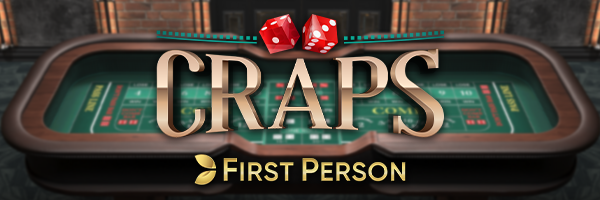

October 14, 2025, 16:15
Everything you need to know about craps
At its core, craps is simple: two dice, a table, and a roll of fate. Yet behind this apparent simplicity lies one of the most suspenseful and socially charged games in casino culture. Today we take a deep dive into the game of craps and what keeps it popular to this day.
What is craps?
Its origins trace back to hazard, a dice game popular in medieval England. Hazard eventually evolved and crossed the Atlantic, reshaped into the streamlined version now known worldwide as craps. What once was a pastime in taverns became a centerpiece of the casino floor.
The table is staffed with a small team: a stickman who controls the dice, dealers who manage bets, and a boxman overseeing the action. Players follow unwritten rules: buy chips between rolls, handle dice with one hand, and never interfere with another player’s turn. At the center stands the shooter, the player who rolls the dice. The atmosphere is electric when they launch the come-out roll.
The rules are simple: a 7 or 11 means an instant win for pass line bettors; a 2, 3 or 12 is a crushing loss. Any other number becomes the point, setting the stage for the next act. From then on, the dice are rolled until either the point is hit again (a win) or a 7 appears (a loss).
The tension escalates with every bounce of the dice, making craps arguably the most communal game on the casino floor.
What are the bets in craps?
Craps thrives on variety. The most popular bets are the Pass Line (betting with the shooter) and the Don’t Pass Line (betting against them). These straightforward wagers offer some of the fairest odds.
But complexity abounds:
After a point is established, players can opt for Come or Don’t Come bets. A Come bet wins on 7 or 11, loses on 2, 3, or 12, or transfers to the new point number for another round. Don’t Come bets are the opposite.
Players can place wagers on specific numbers with buy, place and lay bets, which are identical but pay out slightly differently.
Proposition bets hinge on a single roll: snake eyes, boxcars, or a hard eight.
Field Bets, on the other hand, cover a broader outcome: numbers like 2, 3, 4, 9, 10, 11, or 12. Some casinos sweeten the pot with double or triple payouts on 2 or 12.
There are many other bets you can place in craps, allowing for a wide variety of strategies.
Where can I play craps in Belgium ?
Craps didn’t stay confined to land-based casinos. Online platforms now recreate the experience with digital dice and interactive interfaces. Evolution’s First Person Craps is one of those recreations, and you can play it today at PepperMill Casino.

The online casino game is a single-player version of craps with an immersive 3D environment. You can control the pace of play since the dice are only thrown when you choose to. It has a favorable RTP of 99.17%, and supports a wide betting range (€0.50 to €2,500), making it accessible to both casual players and high rollers.
Beginners can try the demo version before wagering real money, a luxury not found in physical casinos. The game includes an integrated interactive tutorial to help new players understand the different bets and the flow of the game.
More than just dice
Each roll is a story, each cheer a collective moment. Whether played in a neon-lit casino or on a smartphone screen, craps combine ancient history with modern spectacle. It’s not just about luck, but about community, strategy, and the thrill of being on the edge of a win with every roll.
What is craps?
Craps is a dice game where you bet on the outcome of each dice roll.
How many dice are used in craps?
Two identical dice numbered from 1 to 6 are used.
When was craps invented?
Craps evolved from the medieval game hazard.
Can I play craps online?
Yes! A game of craps is available online at PepperMill Casino, the leading online casino in Belgium with free start money for new players.
Can I play craps on mobile devices?
Yes, all of PepperMill Casino’s games are optimized for mobile devices, including craps.


